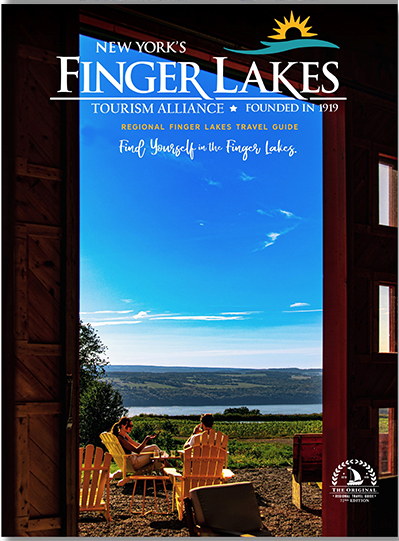ROCHESTER, N.Y., October 23, 2013-George Eastman House will open two exhibitions on October 26 that will be on view through January 12, 2014: The History of Space Photography and Astro-Visions. The History of Space Photography showcases a variety of astronomical photographs that have been created since the development of photography in the early 19th century, and will feature a number of the most important scientific photographs ever created. To complement The History of Space Photography, Eastman House has organized Astro-Visions, which draws from its rich collections to explore how scientists, photographers, and filmmakers have incorporated images of outer space into their work.
"We are thrilled to be able to showcase objects from our collections in Astro-Visions, alongside the survey of astronomical images in The History of Space Photography," said Bruce Barnes, Ron and Donna Fielding director, George Eastman House. "The exhibitions are science-meets-science fiction, and they will delight anyone who has looked at our skies in wonder."
Featuring the earliest black-and-white photographs of the moon, solar eclipses, and stars, through the most recent color images of the early history of the universe from space telescopes, The History of Space Photography is the most comprehensive exhibition of its kind ever organized.
Since prehistory, our species has been in wonderment of the cosmos, those astonishing celestial bodies that are visible during the day (like the sun and the moon) and particularly those visible during the night. Early civilizations performed methodical observations of the night sky, and astronomy-one of the oldest sciences-was born.
Early astronomers who used telescopes had to document what they observed through these apparatus by hand, creating detailed and elegant drawings. Given the amount of time required to produce these visual records, however, rapid celestial events such as solar eclipses were almost impossible to document graphically. With the development of photography in the 1830s, astronomy became able to use a mechanical process to record the wide variety of celestial objects and events. The 150 photographs in the show include a survey of key 19th-century photographs from a number of the major observatories in the world and 20th-century astronomical photographs, as well as a record of images from the most important spacecraft launched by NASA/Caltech's Jet Propulsion Laboratory and other organizations to Mercury, Venus, Mars, Jupiter, Saturn, Uranus, and Neptune, as well as those projects that investigated asteroids, comets, and the sun.
Astro-Visions takes a different look at space and comprises items from the George Eastman House collections. The exhibition presents the ways humans have illustrated their ideas of the cosmos from the mid-19th century to the present. The exhibition includes how scientists illustrated astronomical objects before photography, film stills from Georges Méliès's A Trip to the Moon (1902) and Roger Vadim's Barbarella (1968), and photographs by Bill Finger depicting an imaginary world in which an astronaut gives up everything to live on Mars. The History of Space Photography was developed by Jay Belloli, former director of Gallery Programs at the Armory Center for the Arts, and is being traveled internationally by the California/International Arts Foundation in Los Angeles. Astro-Visions has been curated by Jamie M. Allen, Assistant Curator of Photographs, George Eastman House.
The History of Space Photography was developed by Jay Belloli, former director of Gallery Programs at the Armory Center for the Arts, and is being traveled internationally by the California/International Arts Foundation in Los Angeles. Astro-Visions has been curated by Jamie M. Allen, Assistant Curator of Photographs, George Eastman House.
To complement the exhibitions, George Eastman House is hosting several programs related to space. To kick off opening weekend, artist Bill Finger, assistant curator of photographs Jamie M. Allen, and curator of The History of Space Photography Jay Belloli will discuss the work on view on Saturday, October 26 at 2 p.m. in the Dryden Theatre. Additional programs include:
- The Birth of the Face on Mars and Other Tales of Early Space Photography
- Thursday, November 14, 6 p.m., Dryden Theatre
- Steve Fentress, director of the Strasenburgh Planetarium, will bring his "I was there" accounts as part of the NASA-Caltech Jet Propulsion Laboratory crew that presented over a hundred televised press conferences for the Viking landings on Mars. Free to Eastman House members; included with museum admission. The museum will have extended hours until 8 p.m. to allow visitors to see the exhibitions before and after the lecture.
- Past, Present, and Future: Rochester Connections to Space Photography & Imaging
- Saturday, November 23, 2 p.m., Dryden Theatre
- Jeff Wynn, manager of Image Acquisition Systems at Exelis, will provide an overview of Rochester's rich history and association with space photography and imaging. Free to Eastman House members; included with museum admission.
- Kodak Contributions to Space Photography
- Tuesday, December 3, 6 p.m., Dryden Theatre
- Brad Paxton, CEO of Advanced Document Imaging (ADI), will discuss the Lunar Orbiter, the recently declassified Gambit spy satellites, and a little-known story about the Hubble Space Telescope. There will be a book signing following the lecture. Admission: $6/$3 students; free to members.
The History of Space Photography and Astro-Visions are sponsored in part by Exelis, a global aerospace, defense, information, and services company, and M&T Bank. Both exhibitions are included with museum admission. For more information, please visit eastmanhouse.org or call (585) 271-3361.
About George Eastman House
George Eastman House holds unparalleled collections, totaling more than four million objects, of photographs, motion pictures, cameras and technology, and photographically illustrated books. Established as an independent non-profit institution in 1947, it is the world's oldest photography museum and third largest film archive in the United States. The museum is in Rochester, NY, and includes the National Historic Landmark house and gardens of George Eastman, the philanthropist and father of popular photography and motion picture film. Learn more at eastmanhouse.org.
